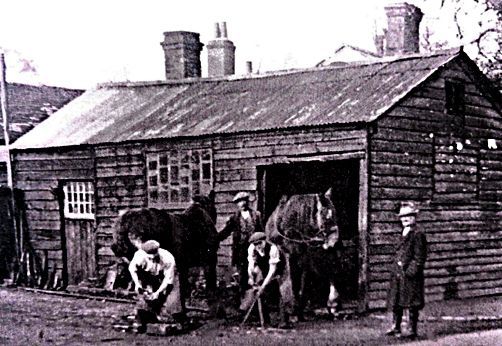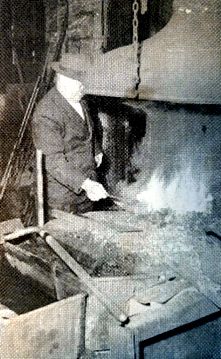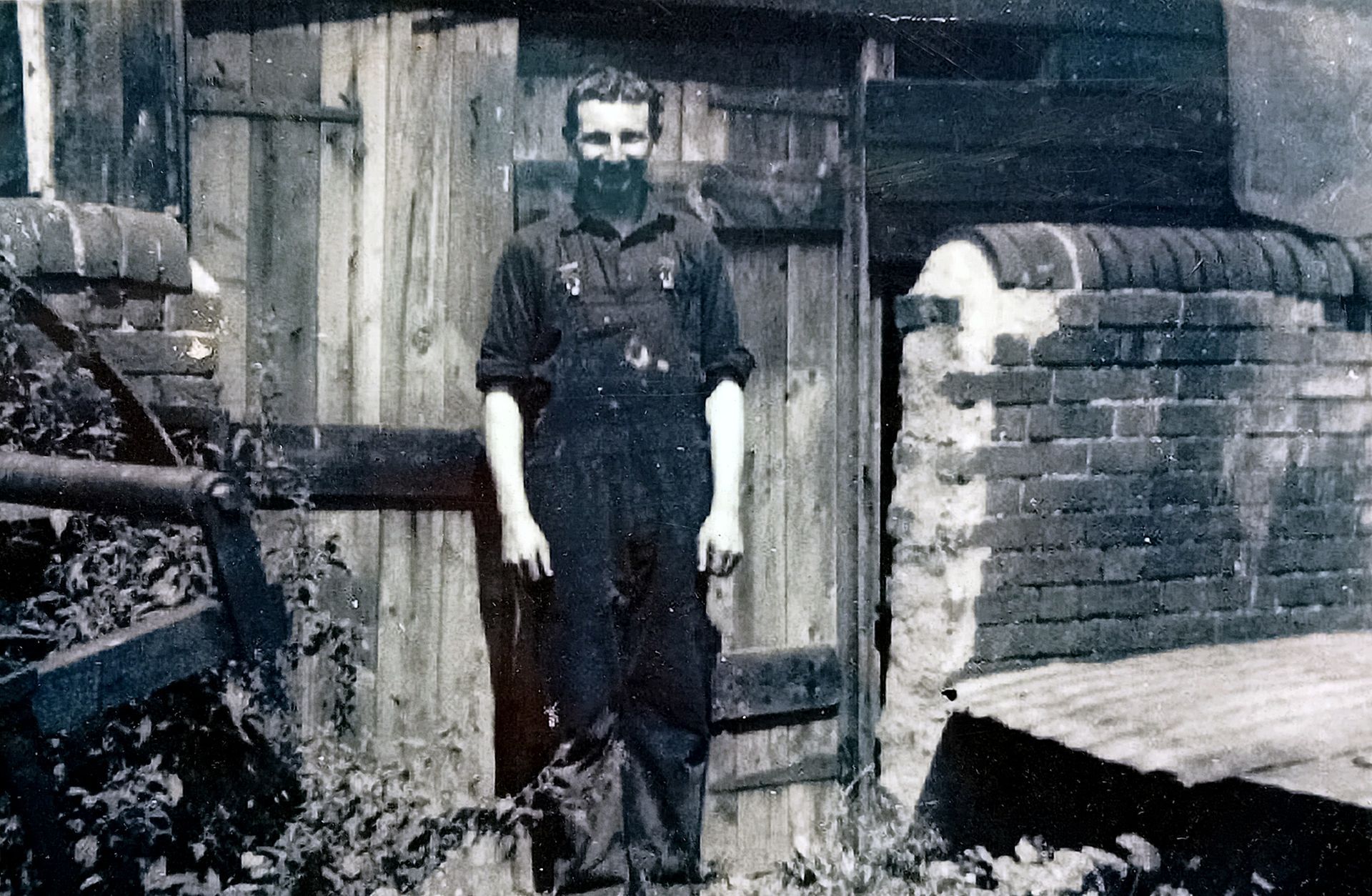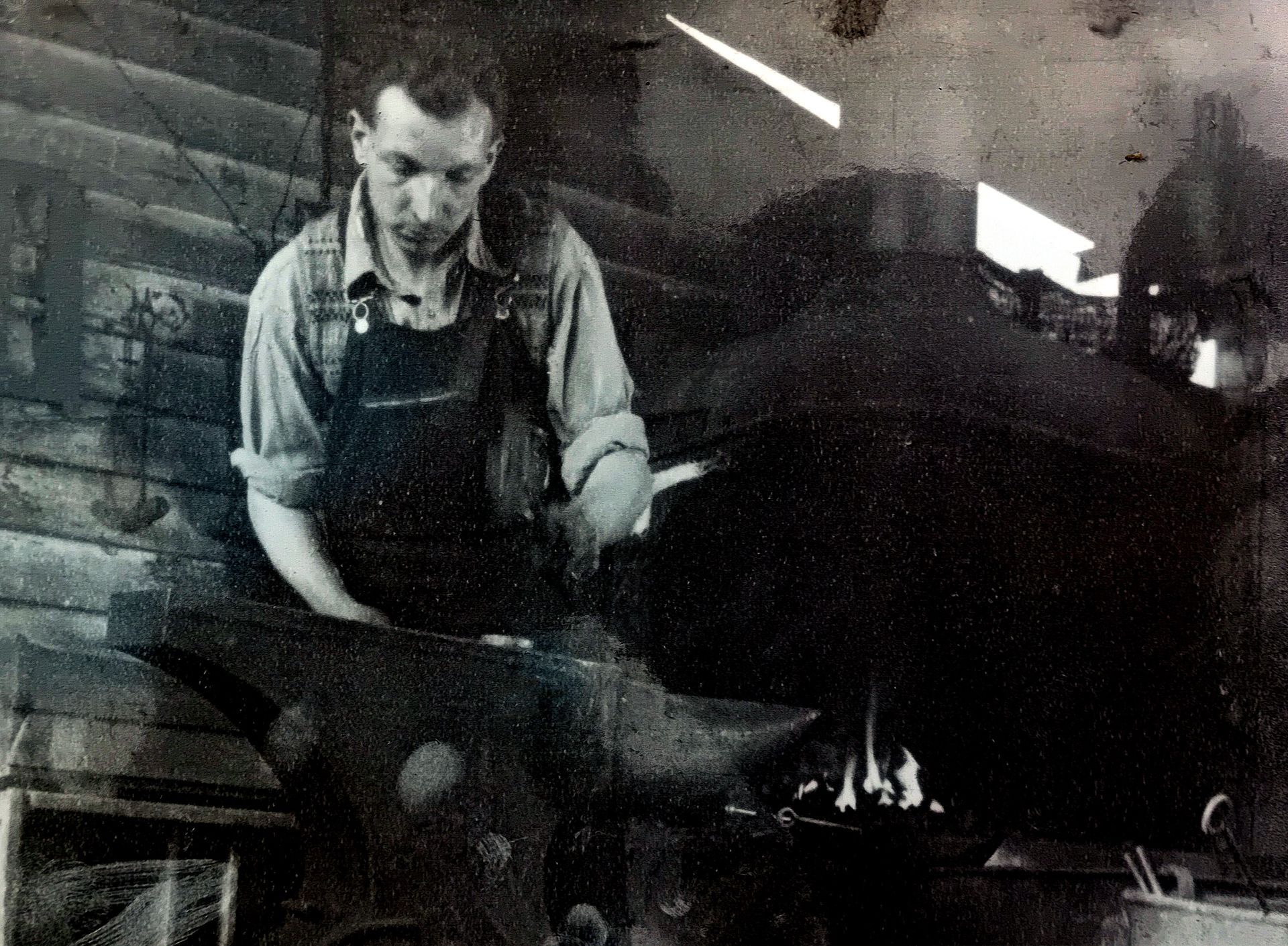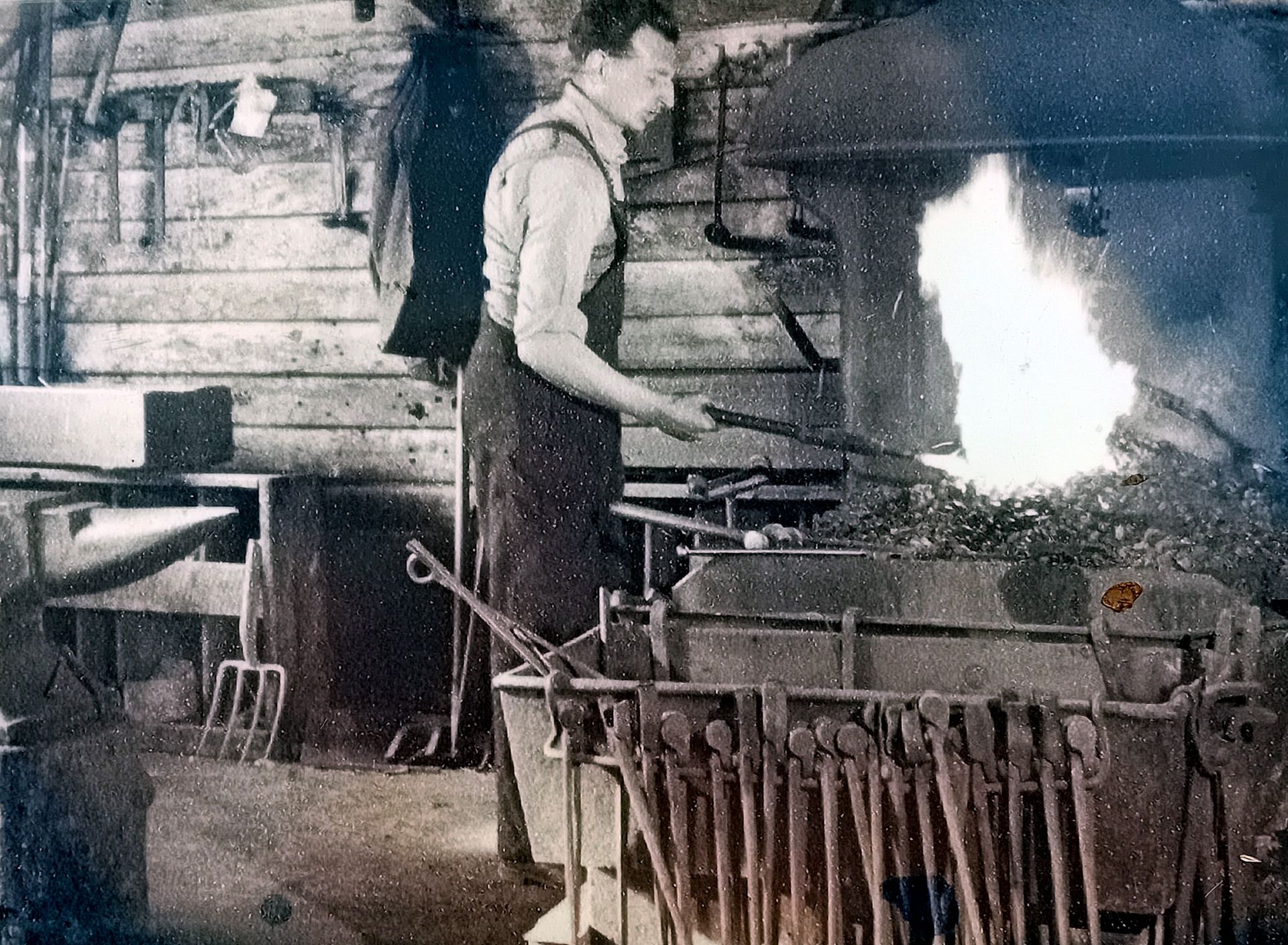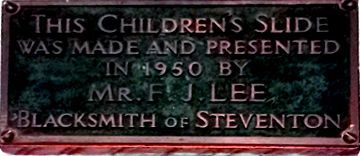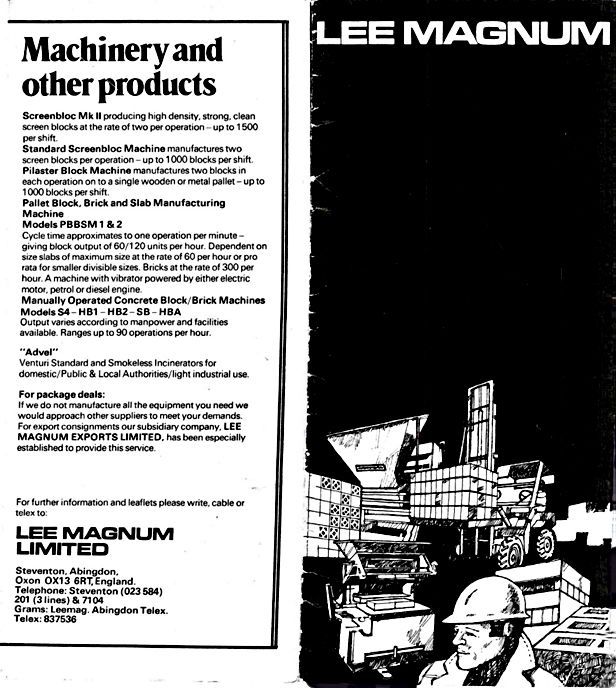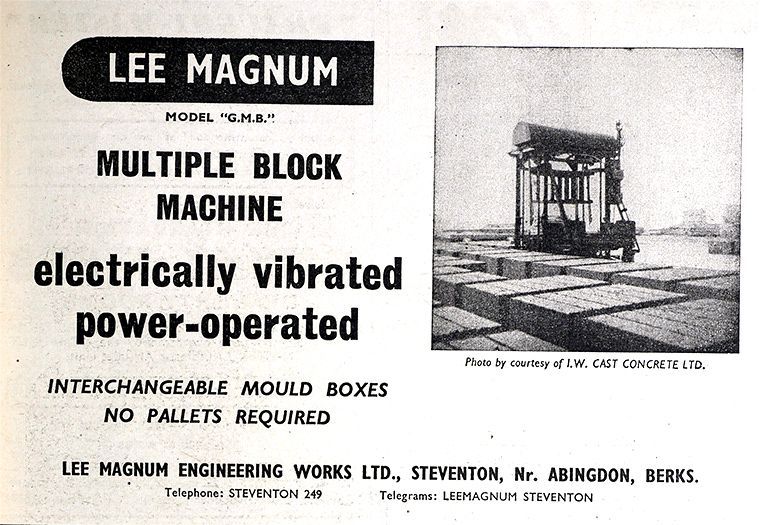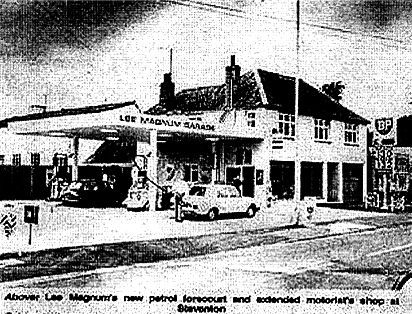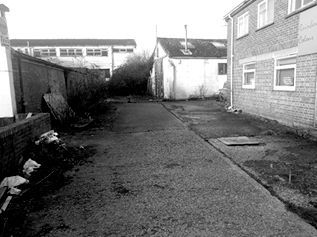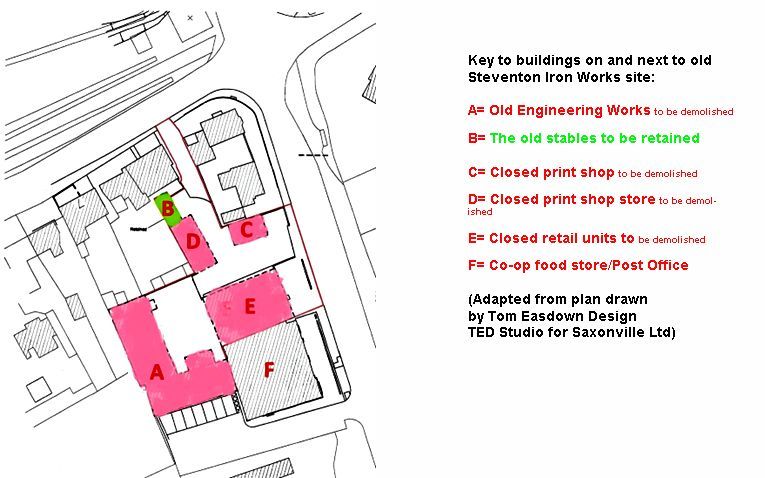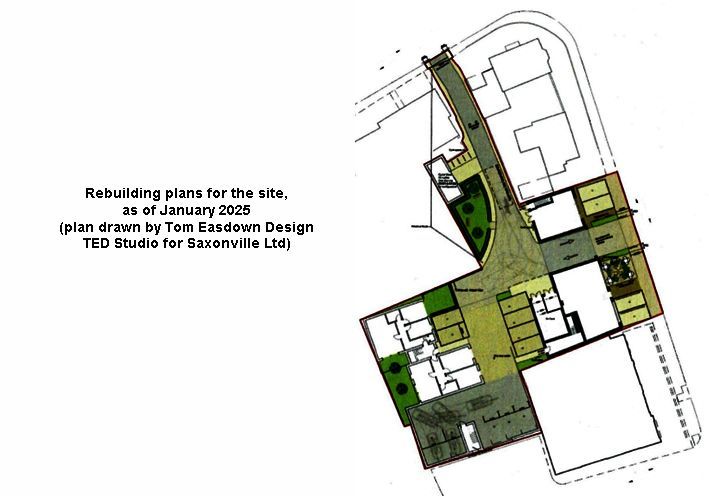Steventon Forge, 1926, from Rosemary Howden’s ‘Steventon Remembered’.
From left to right: Freddie Lee, Mr. Howard, Arthur Grace (not Ben Grace as shown in Rosemary’s book: Ben wasn’t born until 1927) and David ‘Doddie’ James
Freddie was born in 1887 in Ontario, Canada, son of English parents Henry Lee – a farmer born in Millwall, East London – and Jane Lee (née Hedges) from Buckinghamshire. Freddie had two older siblings at birth – Ernest, 3, and Annie, 1. Henry’s father Michael had taken the family to Canada when Henry was a teenager, however in 1891 or 1892 Henry, Jane and the children moved back to England.
Donovan Lee (Freddie’s son) later recalled that Henry opened a shop in Putney, South London, and the census confirms that Freddie’s younger sister Ethel was born there in 1892. However, by the 1901 census Henry was running a farm for an owner in Eastwood, on the outskirts of Leigh-on-Sea in Essex, with Jane and three of the children – Ernest, 17, who was working on the farm, Freddie, 14, and Ethel, 9. Donovan was told that Henry had a brother, William, working in service nearby who may have introduced him to the area.
By 1911 Henry, Jane and Ethel were still in Eastwood – with Henry now caretaker of a school – but Freddie had been apprenticed to a farrier, John Mills, back in Putney where he was a boarder. Donovan wrote later that “one of their customers was the well-known firm of Pickfords the removers, in the days before the motor lorries were used for haulage”.
A year later, Freddie had set up his own blacksmith/farrier business in Leigh-on-Sea, and by the end of 1912 married Emily May Fouracre in Fulham - where she had been living in-service, just over the Thames from where Freddie had been boarding in Putney – and they lived in Essex, where they had Donovan in January 1917. Donovan wrote later that Emily’s father was “associated with horses in the removal business in London”. This may or may not be the case but in 1901 Albert Fouracre, then a greengrocer’s carter, was living in Fulham with his second wife Lucy, Emily May, 7, (daughter with his first wife Emily Jennings who had died in or around childbirth), and son Albert Cecil, 4. In 1905 Albert was described as a Contractor.
According to a 1950s newspaper clipping supplied by Jack Jarvis, while in Leigh Freddie “had made 50,000 horseshoes for the Army during the 1914-18 war”. On the other hand, Donovan wrote that “father has told me they made some sixty thousand mule shoes for the army, working from six in the morning until six at night stopping for breakfast”, and that around 1917 Freddie and his cousin Horace, uncle William’s son, opened a short-lived business in Leigh: The Borough Electrical and Motor Company.
In 1911 Thomas – a retired farmer born in Somerset but most recently farming in Devon - and Jane Jennings, Emily’s grandparents, were living in Dog Kennel Lane, Steventon. They had moved to Midgham, between Newbury and Thatcham sometime after 1891, and to Steventon after 1901. Thomas died at the end of 1917 or beginning of 1918, and around 1919 Albert (now described as a haulier), Lucy, and Albert Cecil (a cycle maker) moved from Fulham and in with Jane. The 1921 Census shows them living together in The Kennels (although Jane died at the end of the year). Albert died in 1933, and Albert Cecil became known as Cecil Albert – presumably to differentiate him from his father – and moved to Station Road (High Street).
Donovan stated that Freddie and Emily had moved to Steventon in 1919 because his “grandmother having bought the parcel of ground whereon stood the old Blacksmith’s shop once part of a foundry where piano frames were cast”: whether he means maternal grandmother Lucy or great-grandmother Jane is unknown, but it seems more likely that Jane had the resources. So, in 1921 Freddie, ‘Farrier & Blacksmith’, Emily and Donovan were living in Station Road (High Street). According to Jack Jarvis’s clipping Freddie moved to Steventon where “he reopened the old Steventon blacksmith’s shop” and planted a conker by the roadway “and the spirit of Longfellow must have rejoiced when it took root” (a reference to Henry Longfellow’s poem ‘The Village Blacksmith’: "Under a spreading chestnut-tree, the village smithy stands; the smith, a mighty man is he, with large and sinewy hands; and the muscles of his brawny arms, are strong as iron bands."
Between 1920-39 Frederick - known locally as Fred, Freddie or ‘Shoe-y’ after his occupation - is listed as the village smith and farrier, initially living with Emily at The Forge but after their daughter Marian Christine (known as Chrissie in the village) was born in 1925 they moved to ‘Petulengro’ in Station Road/High Street (Petulengro from the Romani meaning horseshoe man or thing, hence 'Blacksmith').
Donovan claims in his booklet ‘Another Village Blacksmith: The Life of Frederick J Lee’ that ‘Petulengro’ was based on an old army hut which “served as his residence during the entire 40 yrs of his life in Steventon. The hut was lined with asbestos sheets, the roof was of corrugated iron, lighting was by oil lamp, cooking and heating was from a small kitchen stove, and candles were used in addition. If father worked at night in the winter I recall acetylene gas lamps produced quite a good light, and indoors it was a tremendous improvement when the Aladdin lamp appeared. Photos of this £140 Home appeared in Oxford Times 1920.”
Freddie’s main business in the ‘20s was shoeing and agricultural repair work, he employed a boiler-maker, but he also got involved in bicycle repair – probably employing brother-in-law Albert Cecil, including doing work for Alf Ludlow, the grocer on the Causeway - engine overhauls, knife grinding, and glue-making (for repairing bellows).
Donovan again: “A large workshop was under construction in the early 1920s in conjunction with his (Freddie’s) brother-in-law Mr Fouracre, the lower part of the walls made by pouring in concrete. When the walls were a few feet high the use of shuttering became more difficult and the making of huge blocks began, probably using wooden moulds and it was this that most likely suggested the idea of making a machine for this purpose…under the name of Lee & Fouracre”. This ‘large workshop’ probably became the home of Lee Magnum Engineering Works.
The newspaper clipping shared by Jack Jarvis goes on: “As horses were replaced by machines on the farm and transport, Mr Lee realized that although a small demand for horseshoes and wrought iron work would remain, he would have to adjust himself to the new order. He designed a machine for making concrete blocks, and started to make these machines, as a sideline at first”.
In the 1939 Register Freddie, described as a Master Blacksmith and Heavy Worker, Emily and Marian (Chrissie) are living at 10 High Street. Monty Rednap. motor mechanic & garage proprietor) and his wife Nesta are living at 8 High Street. After 1939 Freddie is listed as ‘mechanical engineer & proprietor of Lee Magnum Engineering Works’, which operated until the 1980s.
